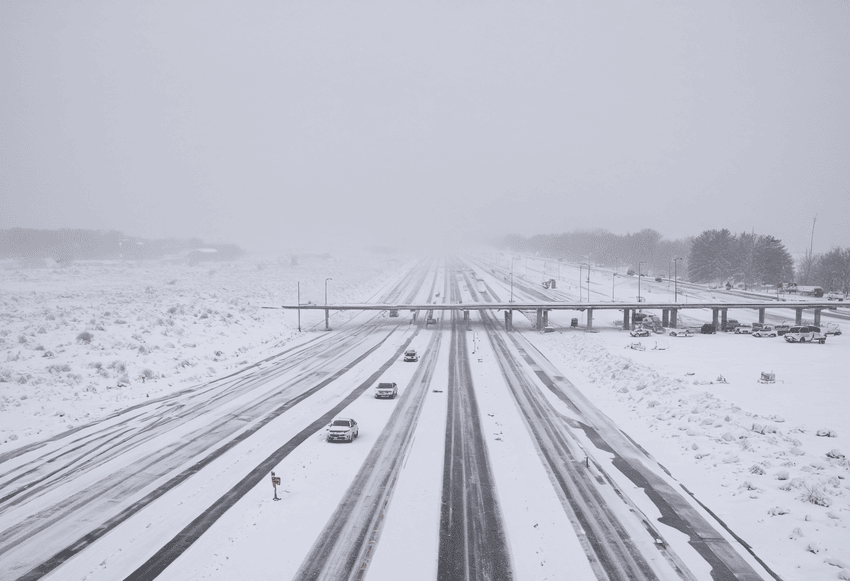A severe arctic cold front sweeping across the Great Lakes region is causing significant disruptions during one of the busiest travel periods in the United States. With plunging temperatures and heavy snowfall, hazardous conditions have impacted both road and air travel, leaving millions of holiday travelers scrambling to adjust their plans. This weather event underscores the challenges the travel industry faces in maintaining operations during extreme weather, while also highlighting the broader implications for the global travel ecosystem.
According to the US Weather Prediction Center, the cold front brought extreme weather conditions to the Midwest over the weekend. Temperatures in some areas dropped below -30°F (-34°C) with wind chill, and snowfall reached an alarming 46 inches in parts of New York, such as Barnes Corner and Copenhagen. Winter storm warnings were issued across the region, and the severe weather is expected to persist through Monday, with more snow forecasted later in the week. For travelers, these conditions have created widespread disruptions. The Great Lakes region, a critical hub for interstate travel, has seen hazardous road conditions, leading to accidents and delays. Local authorities have urged caution for those driving, particularly given the increased volume of vehicles during the holiday weekend.
Air travel has been significantly affected, with delays and cancellations adding to the chaos. At Newark Liberty International Airport, 99 flights were delayed and five canceled as of Sunday, according to FlightAware data. Minneapolis-St. Paul International Airport reported a particularly high rate of disruptions, with more than a quarter of its flights appearing on the “Misery Map” of delays and cancellations. The Transportation Security Administration (TSA) reported that more than 2.7 million people passed through airport checkpoints on Thanksgiving Eve, marking a 40% increase from the previous year. The sheer volume of travelers combined with severe weather has put immense pressure on airport operations, leading to long wait times, frustrated passengers, and logistical challenges for airlines.
The holiday season represents a peak period for the travel industry, and disruptions like these can have far-reaching consequences. The AAA had forecasted a record 80 million travelers between November 26 and December 2, with most relying on cars and planes. The arctic blast has forced both industries to adapt quickly, but not without significant setbacks.
Key challenges faced by the travel industry include: operational disruptions as airlines and transport companies manage delayed schedules and rerouted services; increased costs due to extra resources required for de-icing planes, clearing runways, and maintaining road safety; and traveler dissatisfaction stemming from delays and cancellations, which can lead to negative customer experiences and affect brand loyalty. The impacts extend beyond immediate disruptions. The travel industry’s ability to manage severe weather events is increasingly scrutinized by customers, particularly as climate change contributes to more frequent and unpredictable extreme weather patterns.
This arctic blast highlights the importance of resilience and adaptability in the travel industry, especially during peak periods. For global travelers, the event serves as a reminder of the need to plan for contingencies, including insurance coverage and flexible travel arrangements. Airlines, airports, and road transport agencies must also invest in technologies and protocols that enhance their ability to respond to weather-related challenges. Innovations such as advanced weather monitoring systems, automated de-icing equipment, and improved customer communication platforms can mitigate the impact of such disruptions.
While the immediate effects of the arctic blast are felt in the Midwest, the implications extend to international travel and tourism. The US remains a key travel destination during the holiday season, and disruptions in major transit hubs can ripple across global travel networks. International passengers connecting through US airports face delays, potentially affecting itineraries for onward travel. This event also serves as a case study for destinations worldwide that are prone to extreme weather. Tourism boards and travel operators must balance the need to attract visitors with ensuring safety and preparedness. The ability to adapt quickly and effectively to weather challenges can enhance a destination’s reputation and attract more travelers in the long term.
As extreme weather events become more frequent, the travel industry must focus on developing weather-resilient strategies. This includes greater collaboration between government agencies, transport providers, and technology companies to implement proactive measures. Ensuring traveler safety, minimizing disruptions, and maintaining customer trust should remain top priorities. For travelers, the arctic blast serves as a reminder of the importance of flexibility during peak travel seasons. Investing in travel insurance, opting for refundable tickets, and staying informed through real-time updates can alleviate stress during unexpected events.
The arctic blast that disrupted travel across the Midwest underscores the challenges faced by the travel industry during peak holiday periods. While travelers bear the immediate brunt of delays and cancellations, the industry as a whole must adapt to these increasingly common weather disruptions. By investing in resilience, innovation, and customer-centric solutions, the travel industry can navigate such challenges more effectively, ensuring a smoother experience for global travelers.
The post New Arctic Blast Hits Midwest: Severe Snow and Cold Disrupt Holiday Travel Across Key US Regions appeared first on Travel And Tour World.


